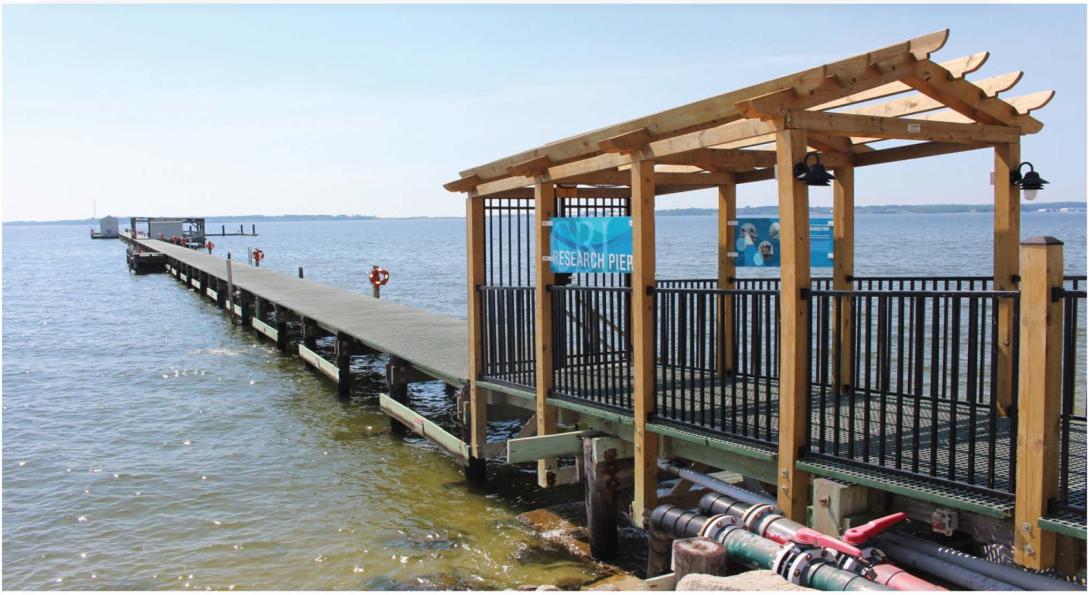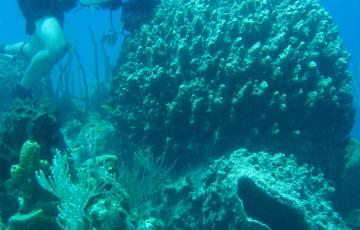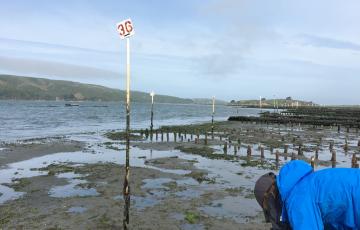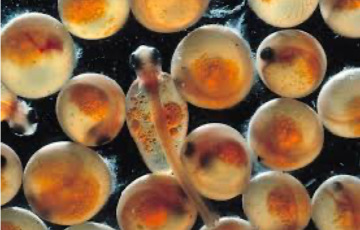Chesapeake Biological Laboratory
To download the activity page, click here.
This activity was produced by the UMCES Chesapeake Biological Laboratory.

In 1918, not long after the Wright brothers' first flight, Reginald Truitt became the first person to fly over Maryland and the Chesapeake Bay. He discovered from above that the estuary was all truly connected. Estuaries are bodies of water and their surrounding wetlands that are found where rivers meet the sea. They have a unique mixture of fresh water draining from the land and salty seawater, called brackish water. Seeing the connections between land and water habitats inspired Truitt. Borrowing a microscope, he set up a modest laboratory to study the oysters, crabs and fish that were so plentiful in the Bay. When he opened the laboratory in 1925, it became the first publicly supported marine laboratory on the East Coast. The Chesapeake Biological Laboratory is located on Solomons Island. It is about 80 miles south of Baltimore, Maryland, and 60 miles south of Annapolis, the state capitol. The lab sits at the mouth of the Patuxent River. This places it within easy reach of the diverse aquatic and land habitats of the Chesapeake Bay, the largest estuary in the United States. Over the decades, the Chesapeake Biological Laboratory has become international known for the high quality of its research. Much of our research still focuses on the Chesapeake Bay and biology, the study of living organisms. But today, our scientists also conduct research around the world in many different scientific fields. Did you know that you can pursue a career in one of many different types of science? Research at our lab focuses on areas of science called:
- Chemistry, a branch of science that studies the composition, structure, and properties of matter. For example, some of our environmental chemists travel to the arctic, a cold, northern region, to study the impacts of climate change on the food web.
- Toxicology, the study poisons and their impacts. For example, some of these scientists are investigating if the chemicals in sunscreens might hurt corals reefs, an important habitat found along the coasts of tropical oceans.
- Ecosystem studies, which explore the complex interactions that occur within a community ofliving organisms and their physical environment. For example, some of these scientists, along with their colleagues, discovered that the nutrients Nitrogen and Phosphorous both play an important role in the health of the Chesapeake Bay. Though plants and animals need them to survive, when too many nutrients enter waterways, they cause algae blooms and low oxygen conditions. Each summer in the Chesapeake, an area of little to no oxygen, called a Dead Zone forms in the Bay's deep channels.
- Restoration sciences, which aims to recreate, begin, or speed-up the recovery of an ecosystem that has been disturbed. For example, some of our scientists are determining how effective stream restoration and other types of management practices are at improving water quality of waterways.
- Fisheries science, which studies managed and threatened marine species by exploring biology, populations, food web, habitat needs, and the needs of fishermen. Our scientists have made important discoveries about the Chesapeake Bay's fished species, like striped bass, Maryland's state fish, and menhaden, which are used for fish oil. They've also investigated the habitats and ecosystems that support these important species.
For a crossword using terms about the Chesapeake Biological Laboratory, download the activity page here.


